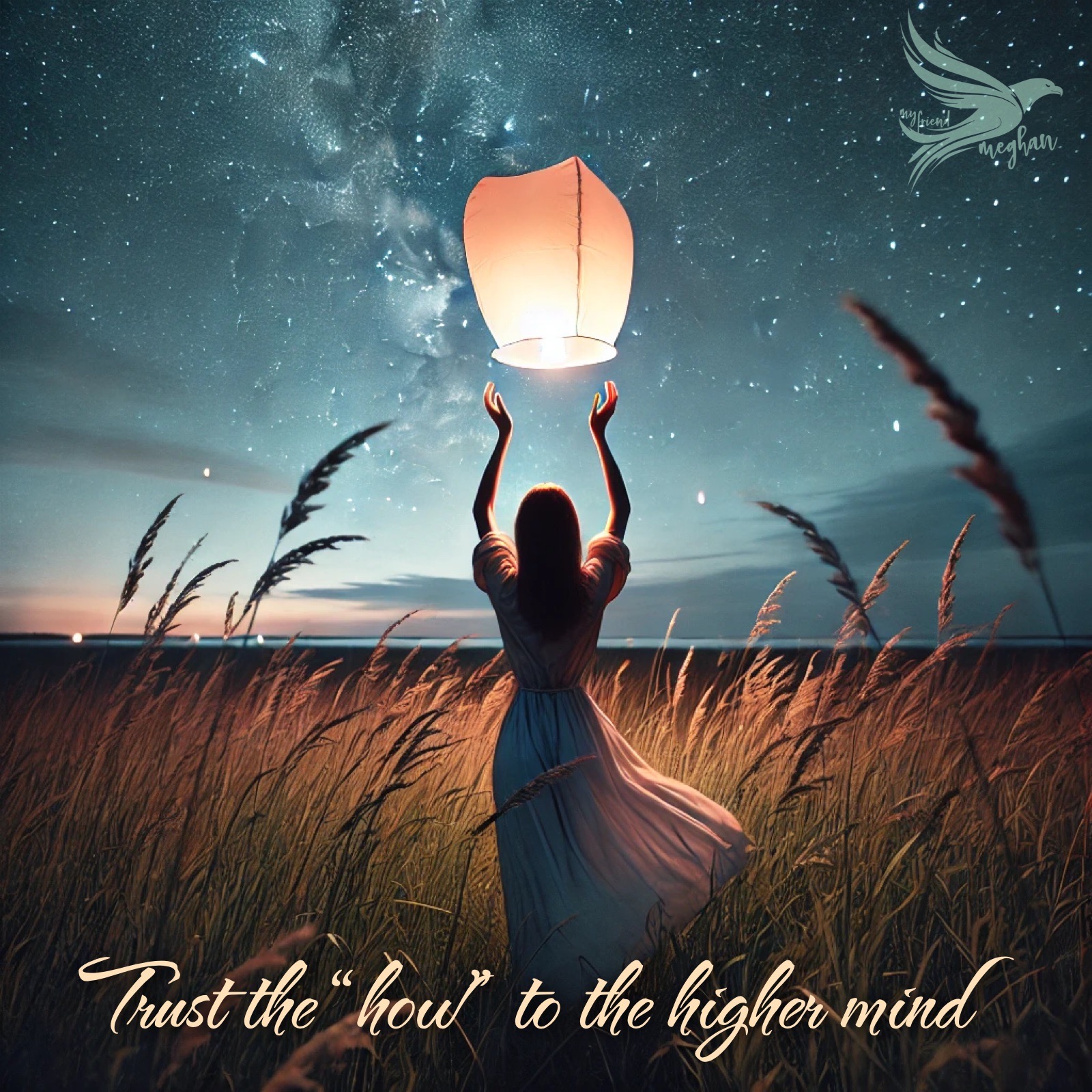There’s a nuance in manifestation that I’ve wrestled with for years—one I couldn’t quite put into words until I heard Bashar describe the relationship between the physical mind and the higher mind. Suddenly, so much clicked into place— what he shared resonated so deeply. The deep desire to live in expectation of good while still learning to let go of attachment to form is such a balance, but with this key piece it all makes sense.
The True Role of Visualization
We often hear advice to visualize what you want or act as if it’s already done, but what’s rarely clarified is this: the visualization isn’t the blueprint for what’s coming. It’s the emotional ignition. The point isn’t to lock in a specific result. It’s to stir your inner emotions and communicate your desire to your higher mind through those feelings and emotions. In return, the higher mind responds with passion and excitement, guiding you toward aligned opportunities. That emotional resonance—both what you generate and what’s reflected back—is what puts you in step with your higher self.
Two Minds, Two Functions
Your physical mind—the part of you that experiences the present moment and makes day-to-day decisions—is not designed to know how things will unfold. That’s not its job.
The higher mind—the broader, non-physical aspect of you that sees the full path ahead—is the one that holds the “how.” It knows what’s aligned. It knows what’s possible. And it knows how to bring those possibilities into form in ways the physical mind can’t yet imagine.
When your Higher Mind sparks a vision, it’s sending you a signal through passion and inspiration — like a breadcrumb toward alignment. Your Physical Mind’s role isn’t to figure out every step. It’s to feel into that vision, anchor the emotional state it evokes, and stay open to the ways it could unfold. Visualization becomes the bridge between the two: the Higher Mind offers the spark, and the Physical Mind nurtures the flame by keeping you in the vibration of that excited charge. This partnership frees you from needing to control the process while keeping you aligned with what’s calling you forward.
Surrendering Control, Welcoming Possibility
When we burden the physical mind with figuring everything out, we overload it. We tire ourselves out trying to control timelines and details that aren’t ours to hold. But when we instead let ourselves follow our inner guidance—trusting the flow, and release the expectation that the outcome must look a certain way, we step into a powerful partnership. We are welcoming possibility and now the higher mind can guide us. It can deliver the unexpected, the better-than-expected, the absolutely perfect—even if it doesn’t match the picture we originally held.
This doesn’t mean you shouldn’t visualize. In fact, visualization (which you will hear me refer to as sanctified imagining) is still a vital tool—but for a different reason than we’re often told. Its true purpose is to activate the emotional state of alignment—to communicate your desire through emotion and place you in the energetic space where your higher mind can respond with passion, excitement, and inspired guidance.
Letting Go of Limiting Expectations
What we often think is the “best case scenario” is just the starting point for the higher mind. Our imagined ceiling is its floor. So when we lock ourselves into needing that one thing to happen, we limit what can be delivered. But when we hold space for that expectation of good—a deep trust that something wonderful is coming, without needing to define it—we open ourselves to miracles.
If you’ve been exploring intentional living, this is a key piece. It reframes how we move through passion, vision, and trust. It helps us release pressure from the physical mind and finally relax into the wisdom and creativity of something greater.
Actionable Insights
- Let the physical mind off the hook It’s not your job to figure out how everything will unfold. Pause when you notice yourself spiraling into planning or overthinking and ask, “Is this mine to hold?”
- Use visualization to fuel emotion Instead of attaching to the mental picture, tune into how the vision makes you feel. That excitement is the bridge to your higher mind.
- Maintain an open expectation of good Stay aligned with the belief that something wonderful is on its way, even if you don’t know what it looks like yet. Can you hold space for delight without trying to predict it?
- Notice when you’re trying to control outcomes Gently ask yourself, “Am I closing the door on better possibilities by insisting on this version?” Let that question soften your grip and expand your view.


Leave a Reply